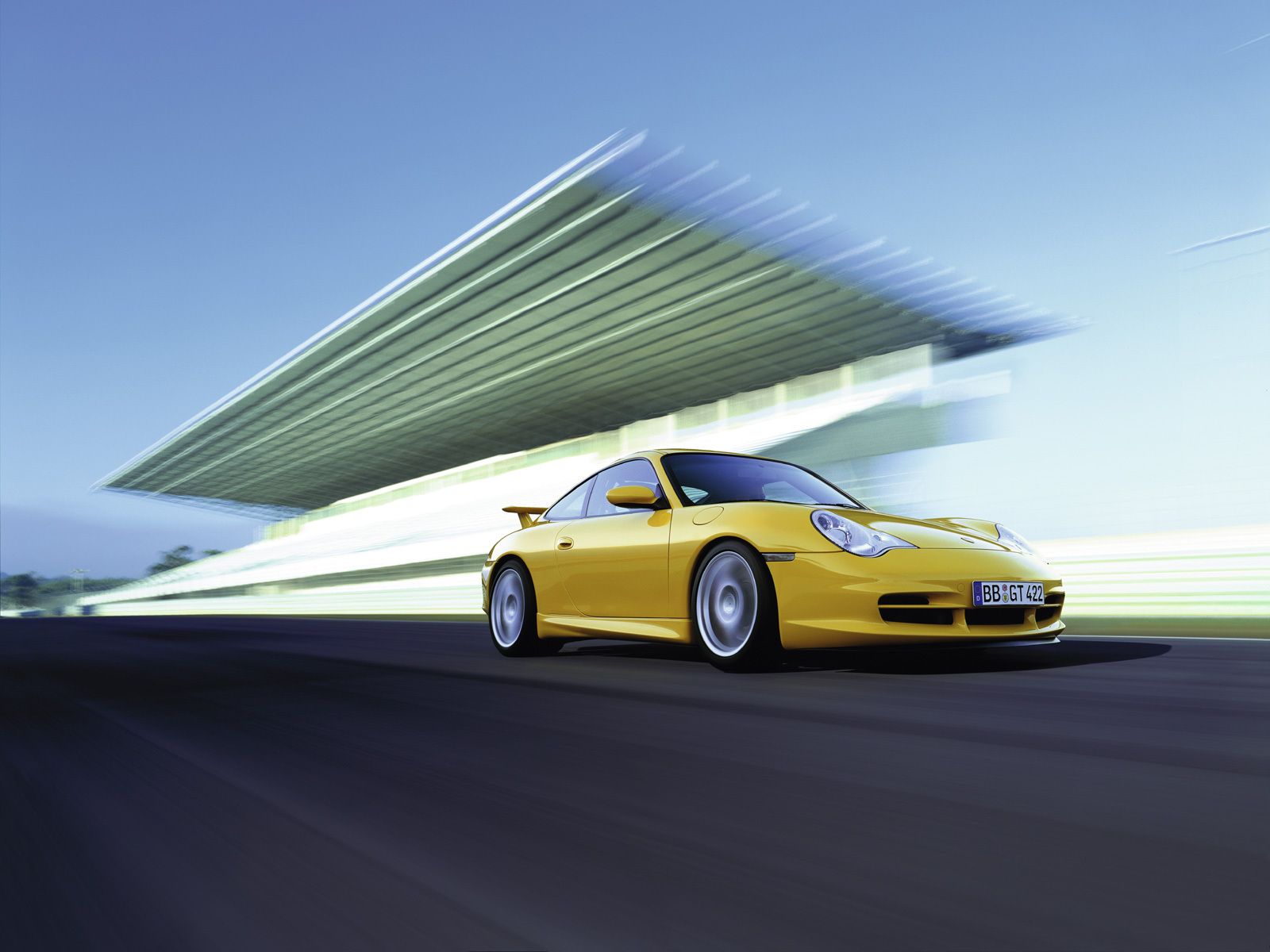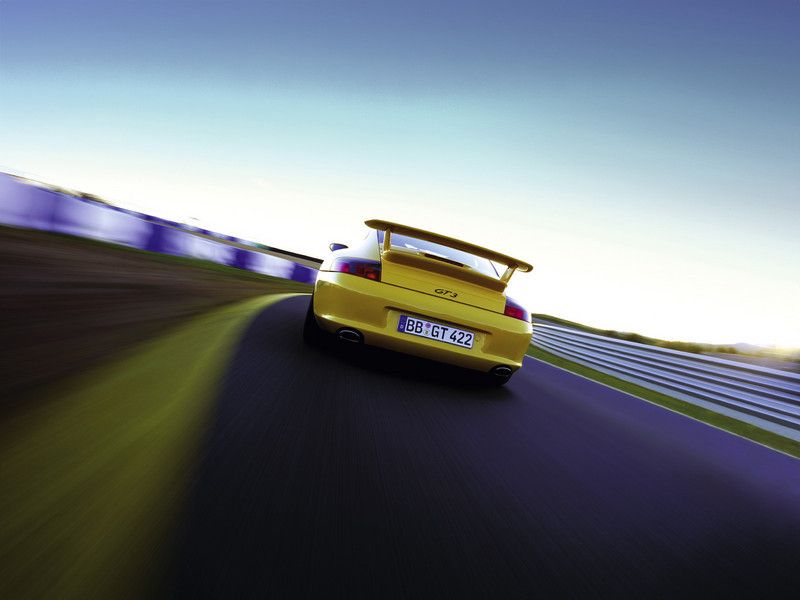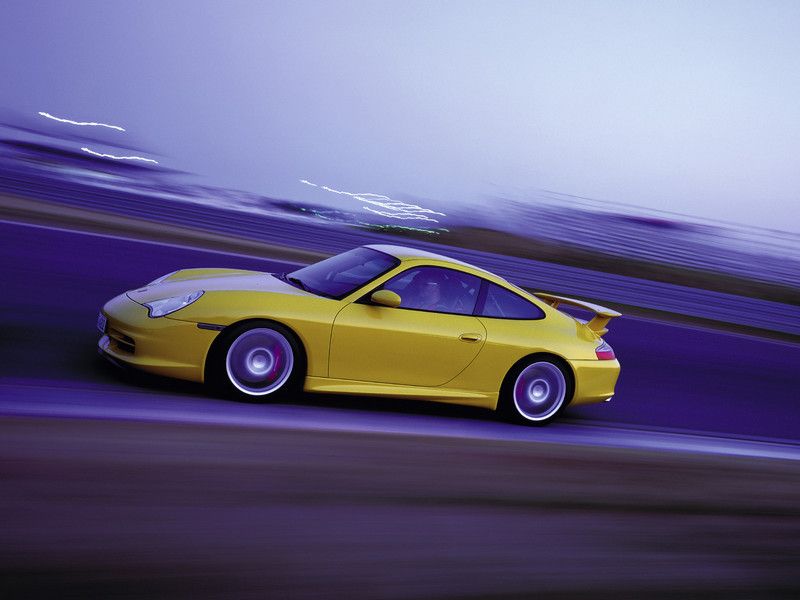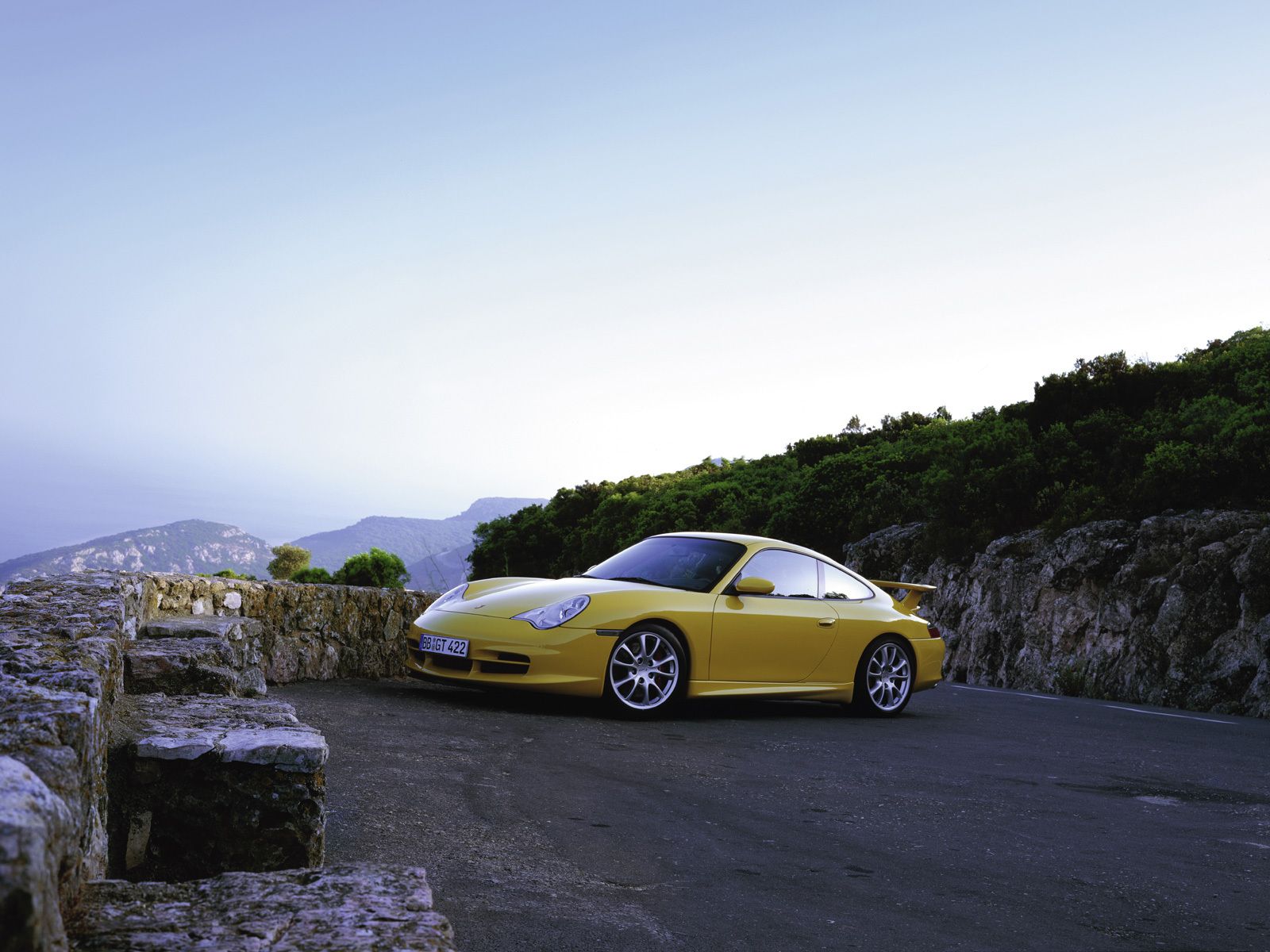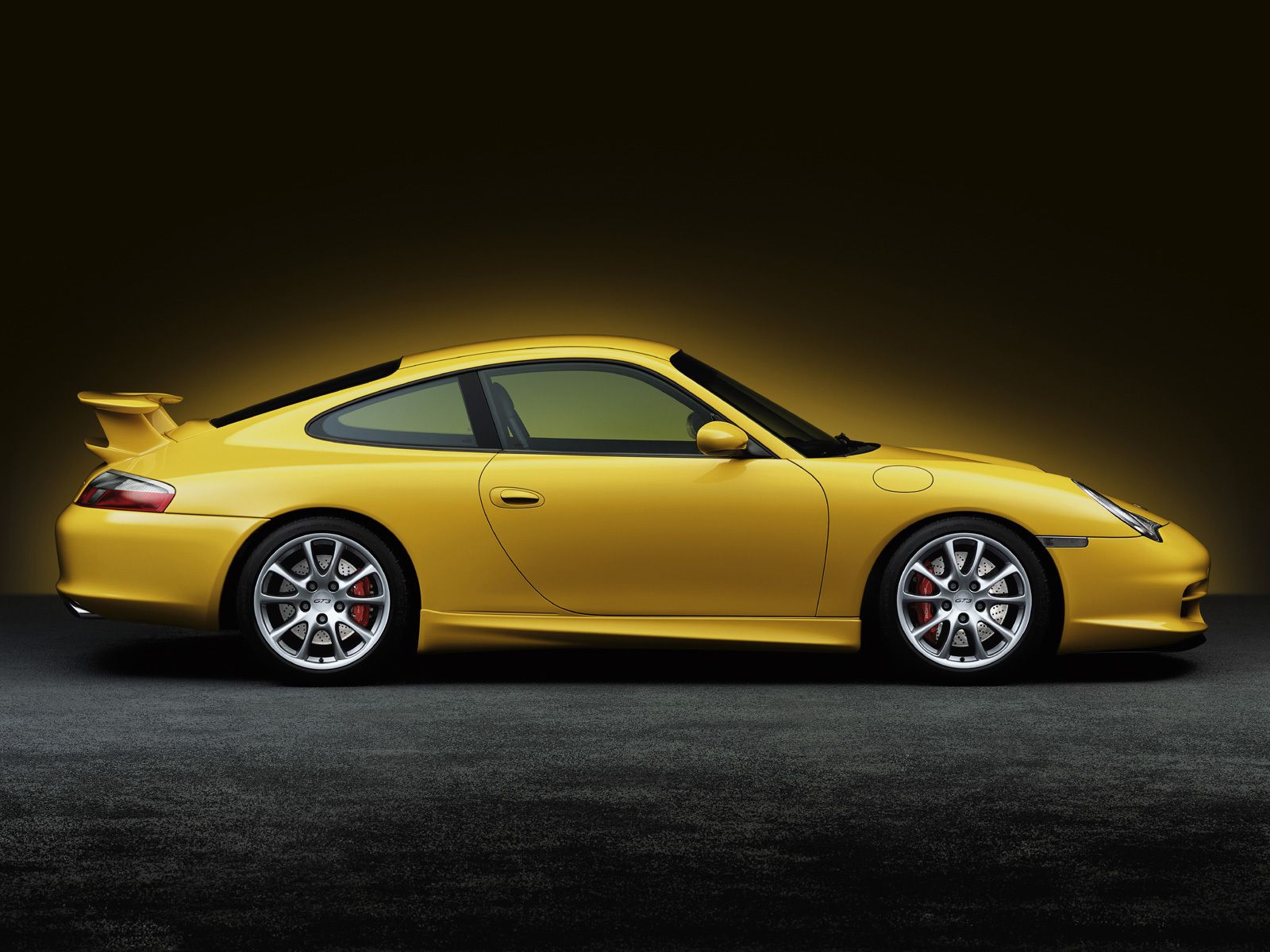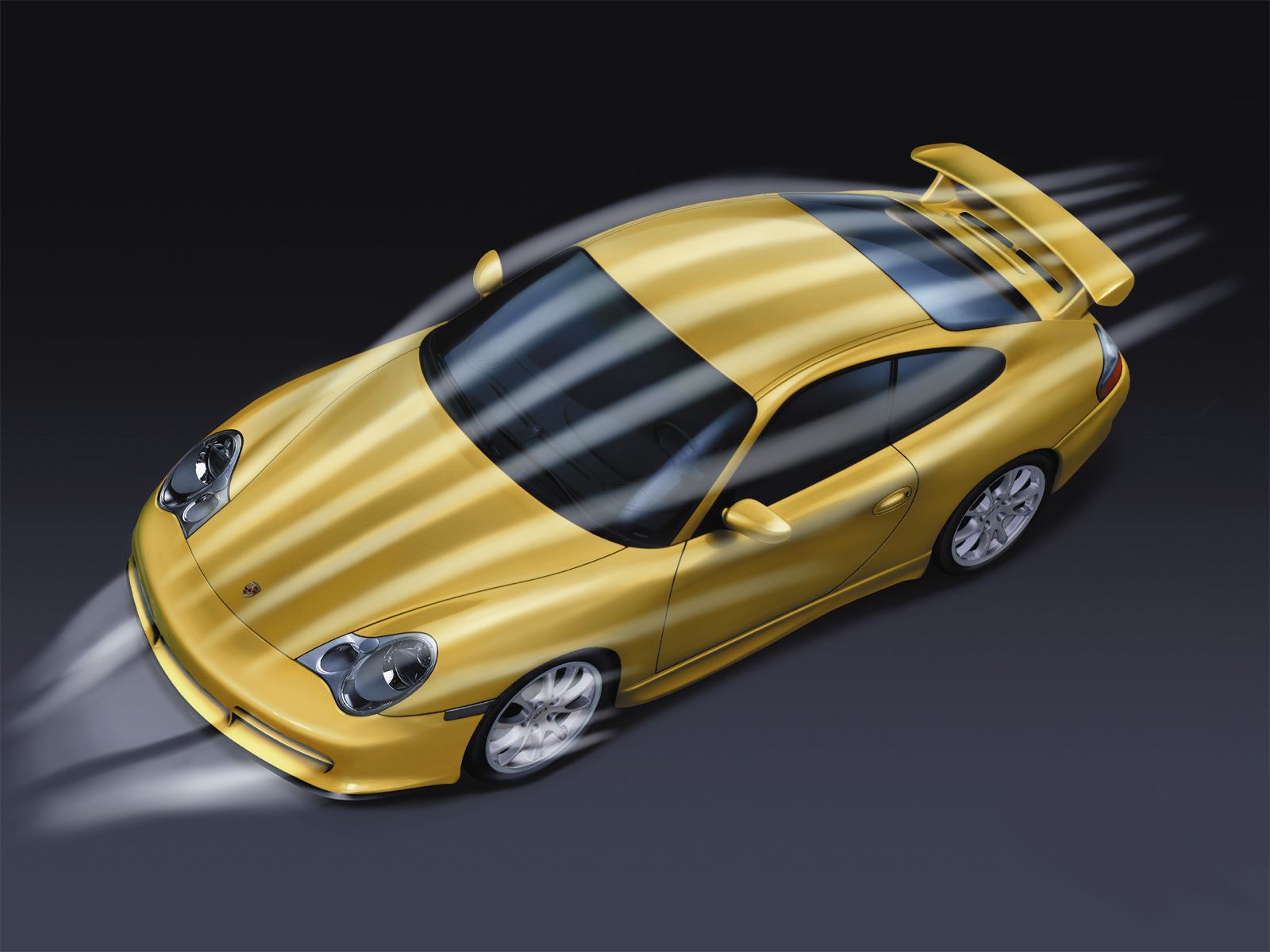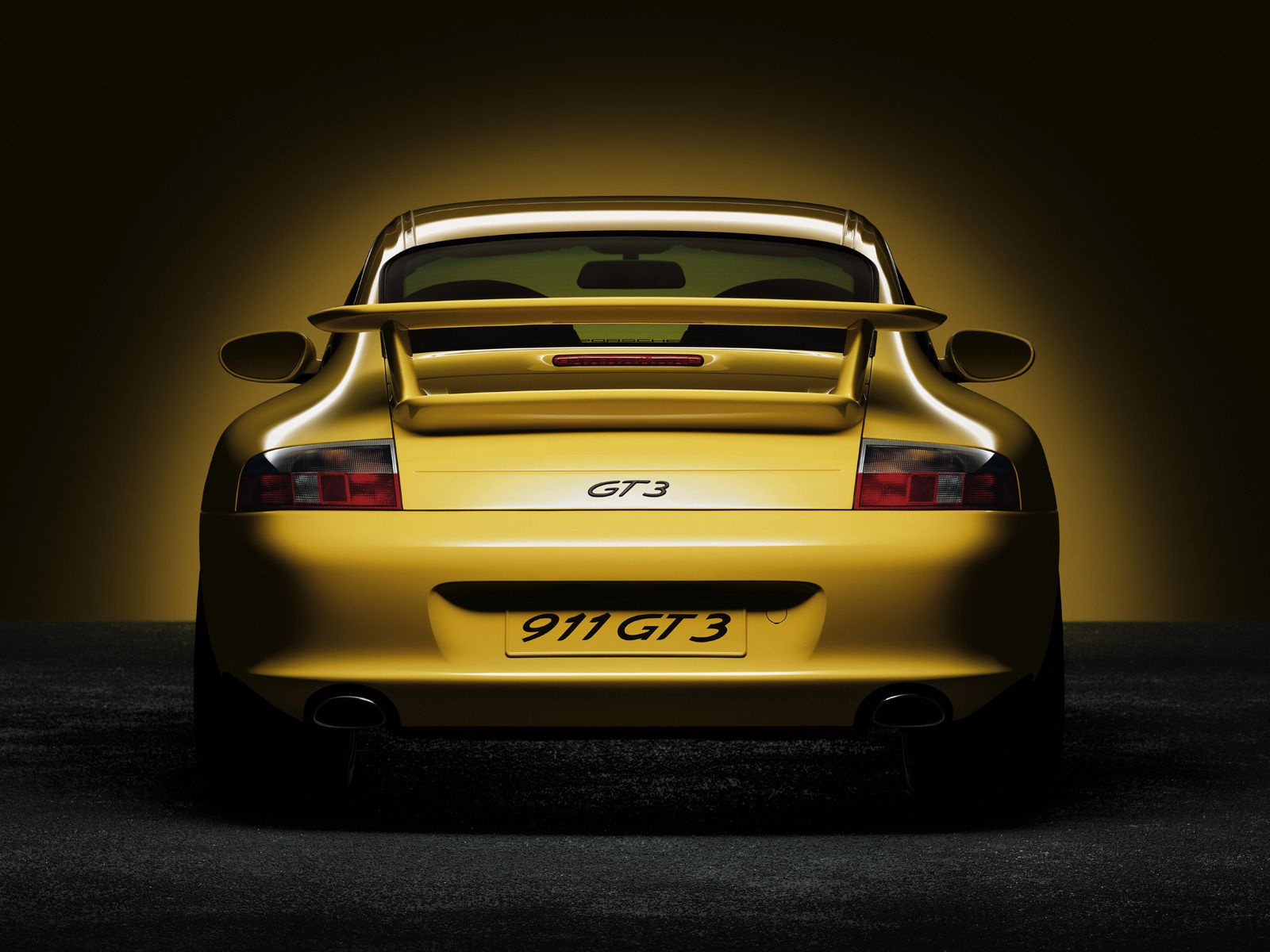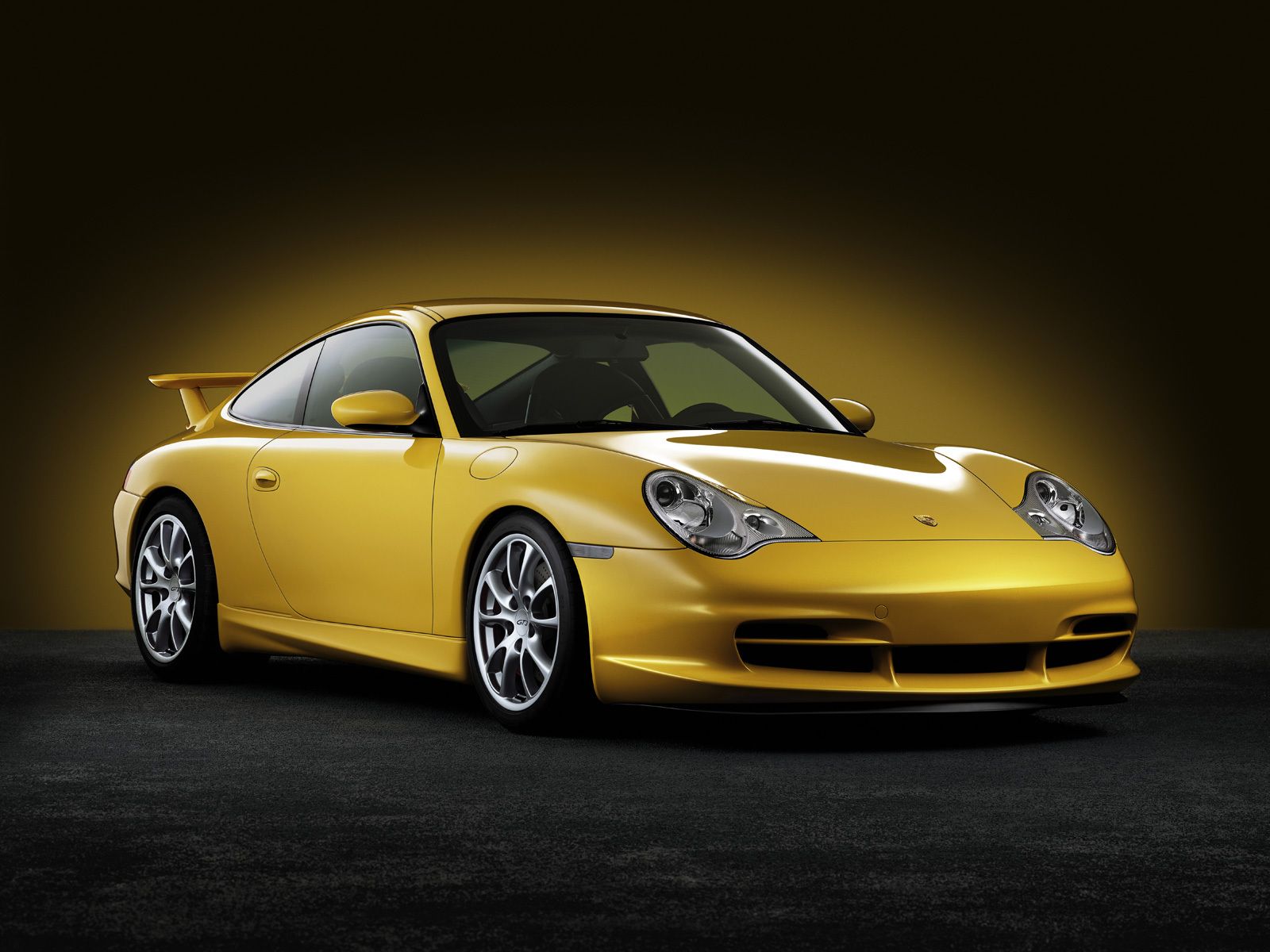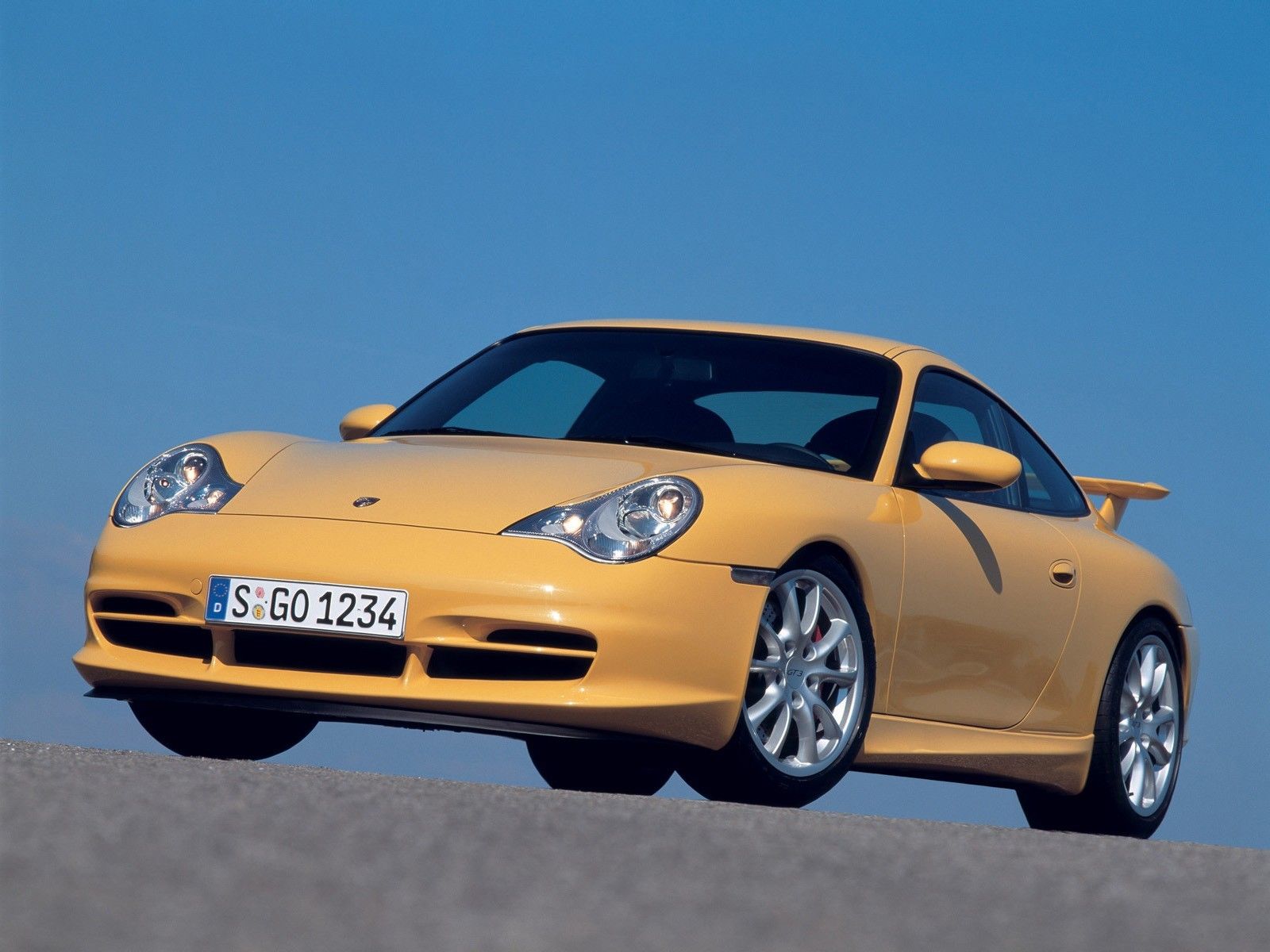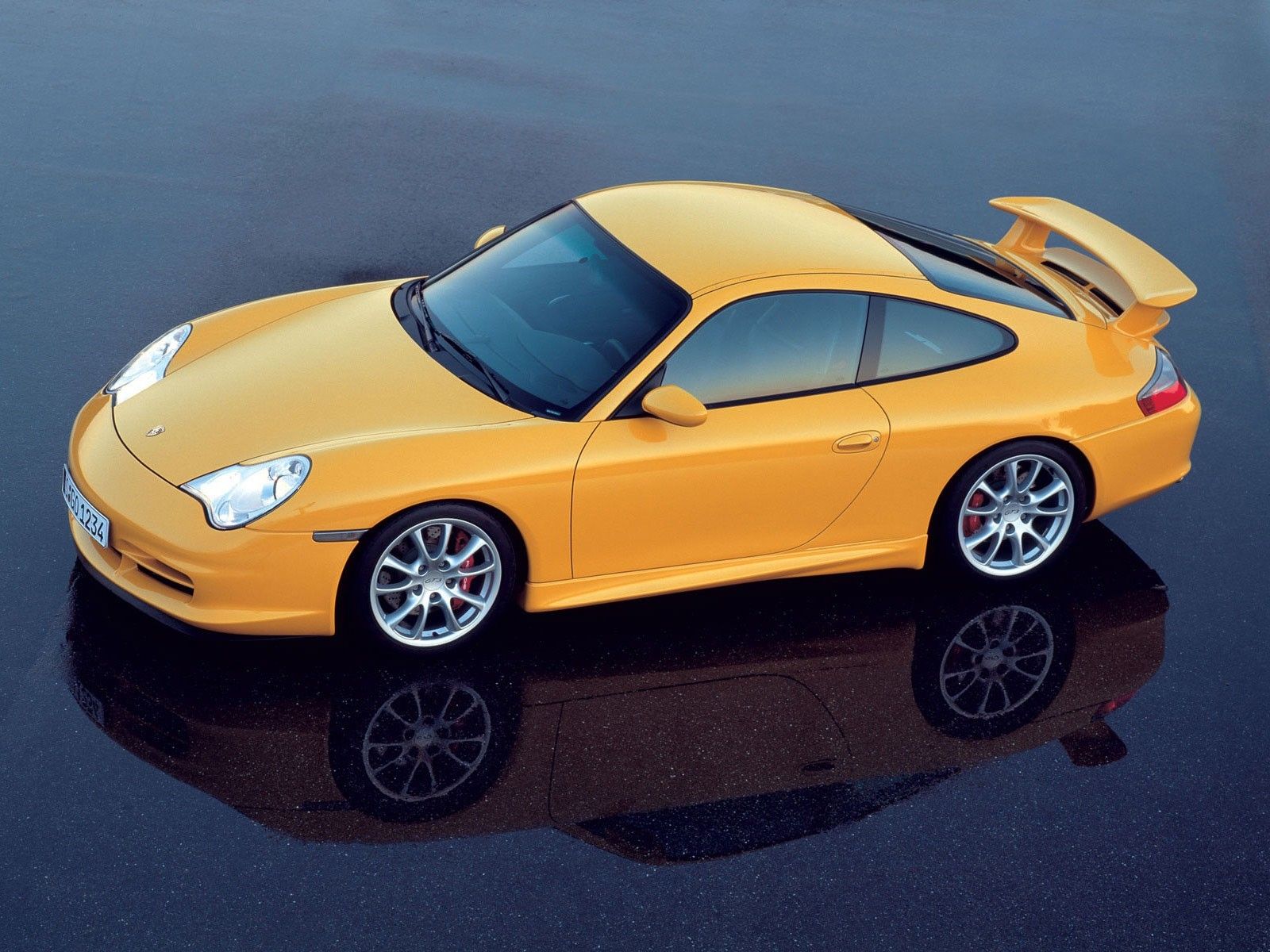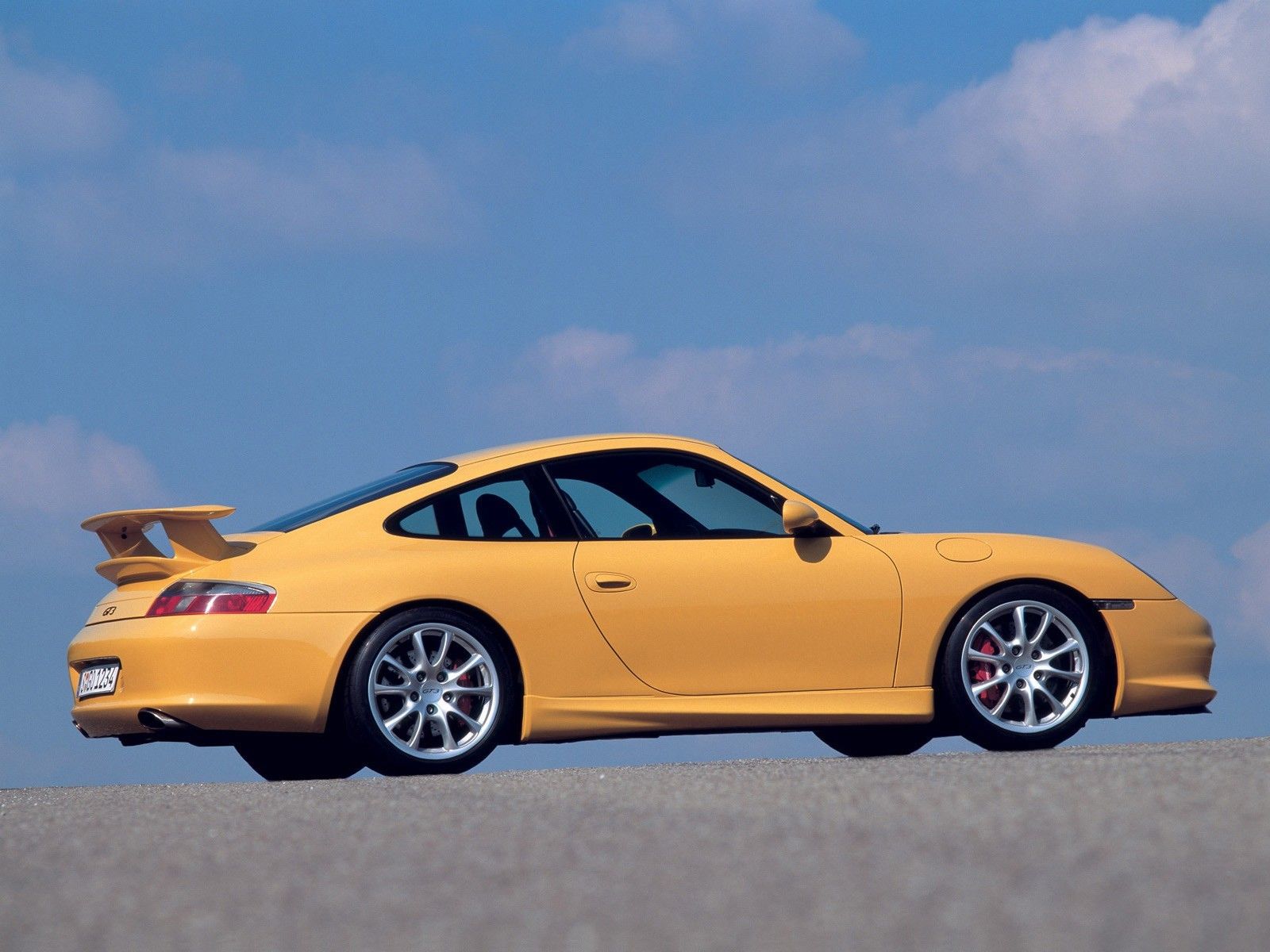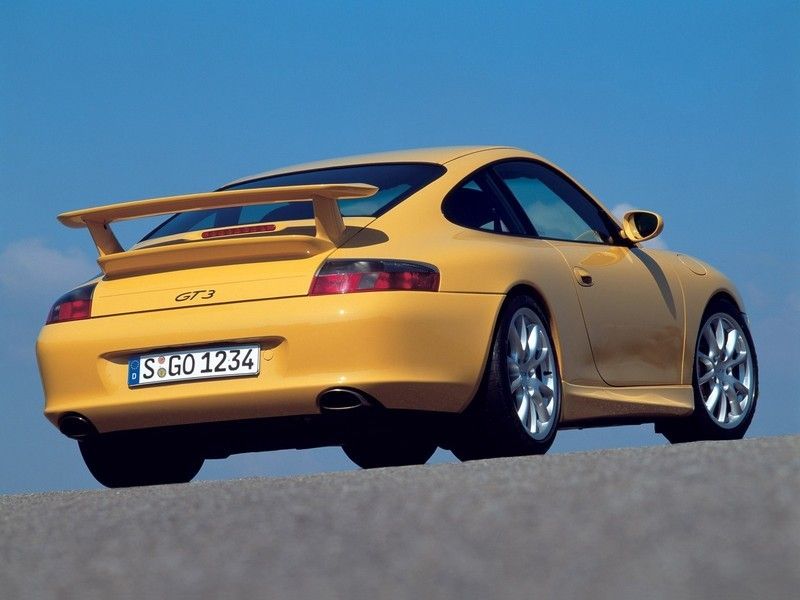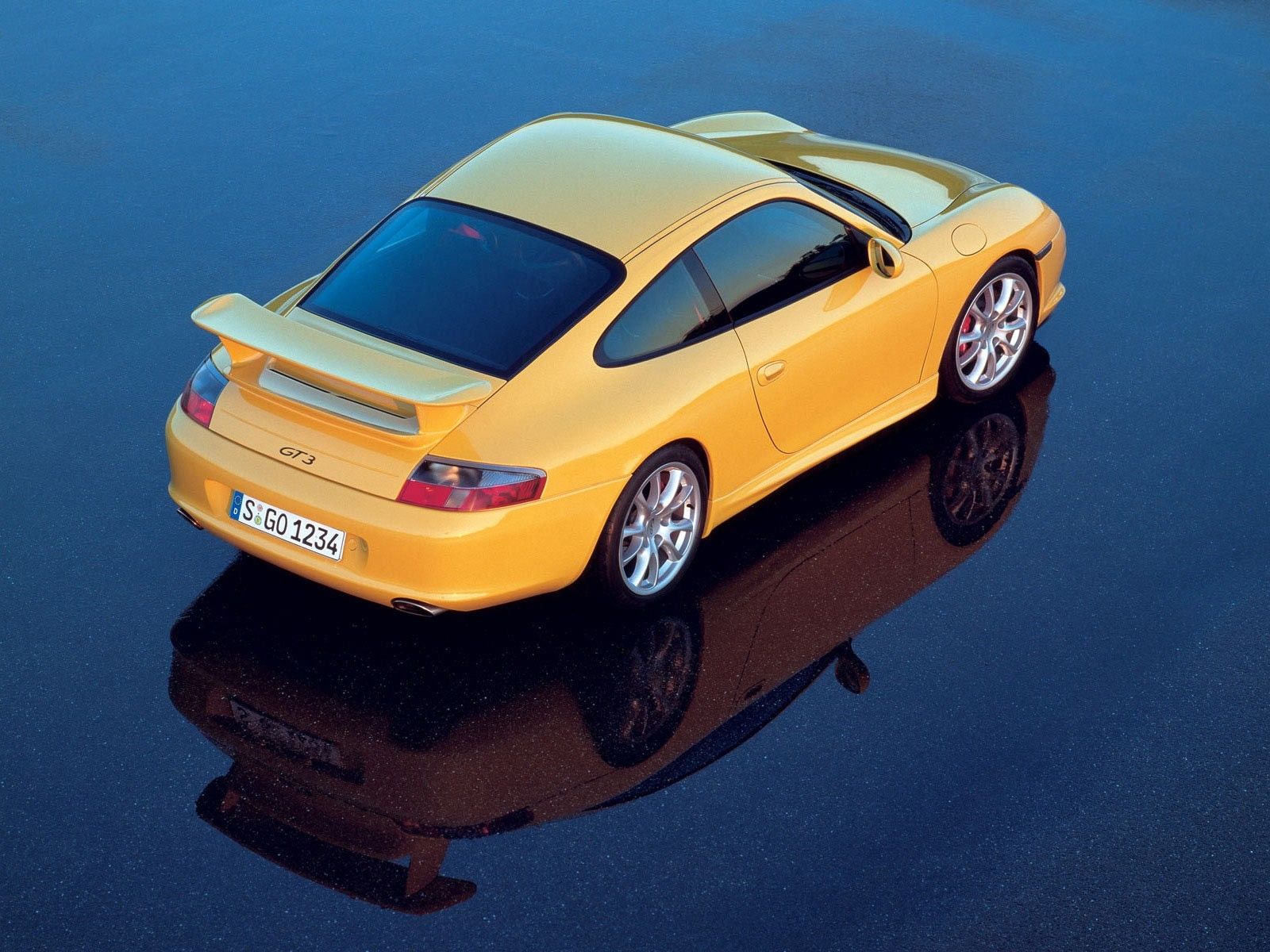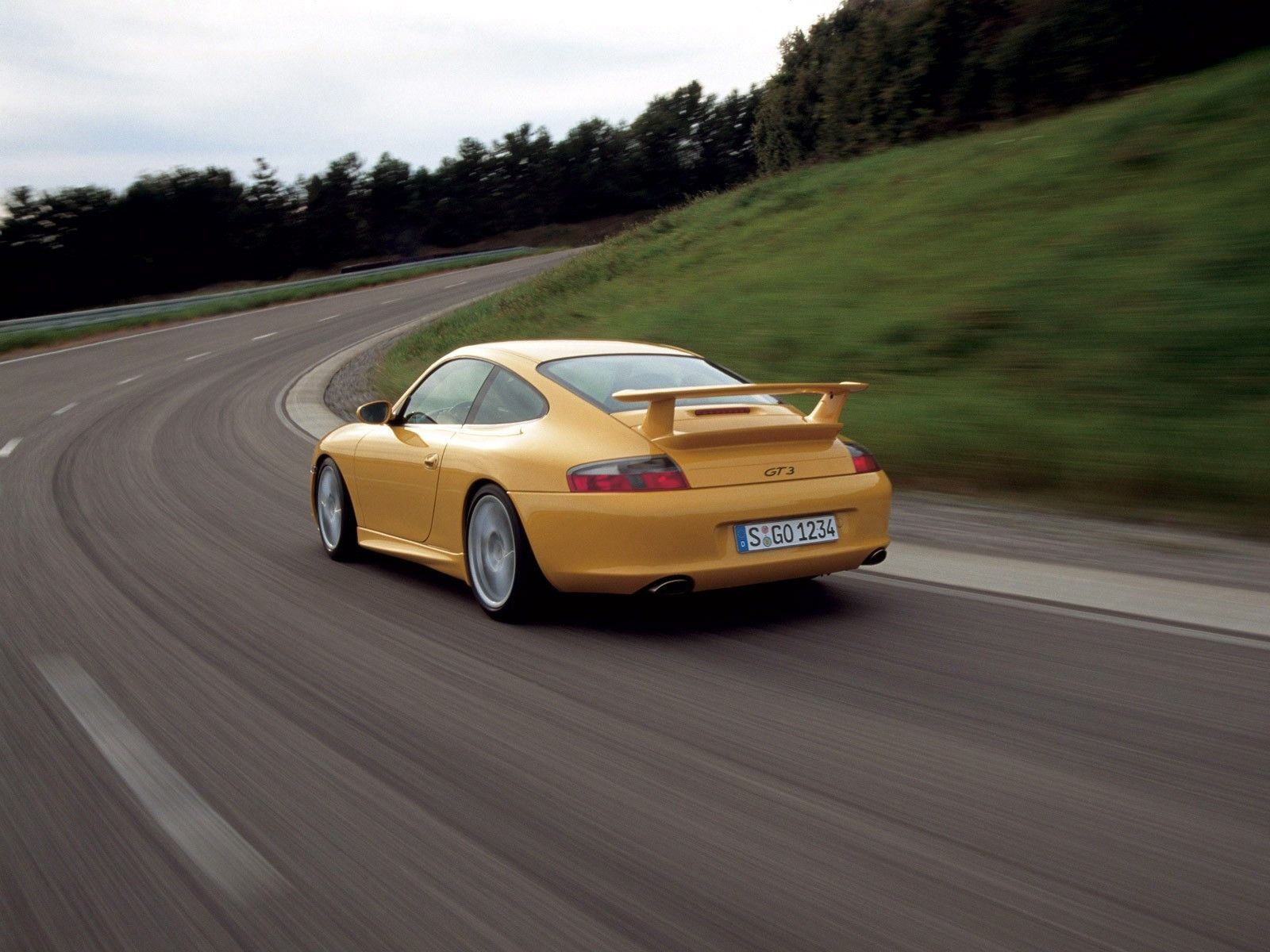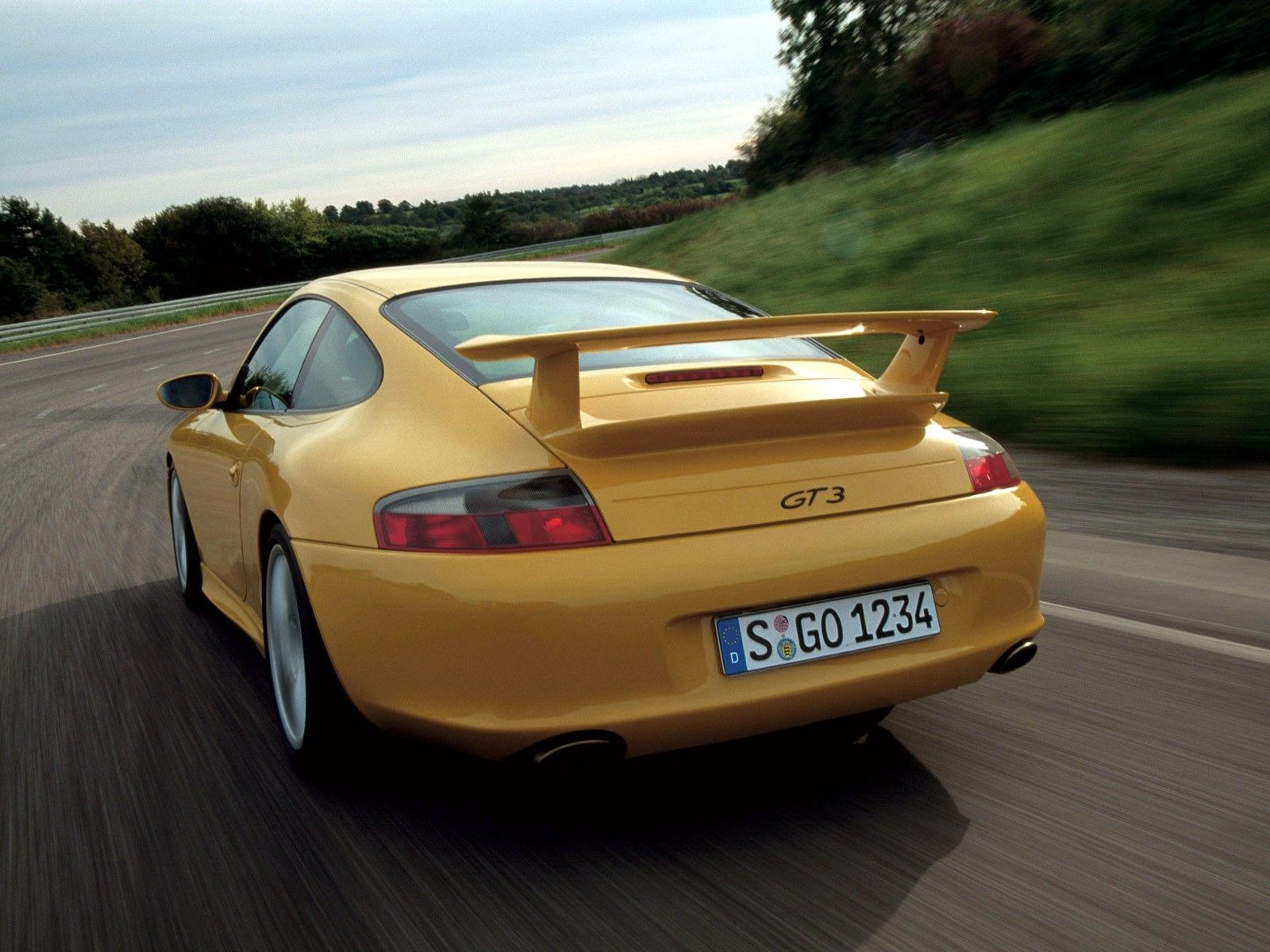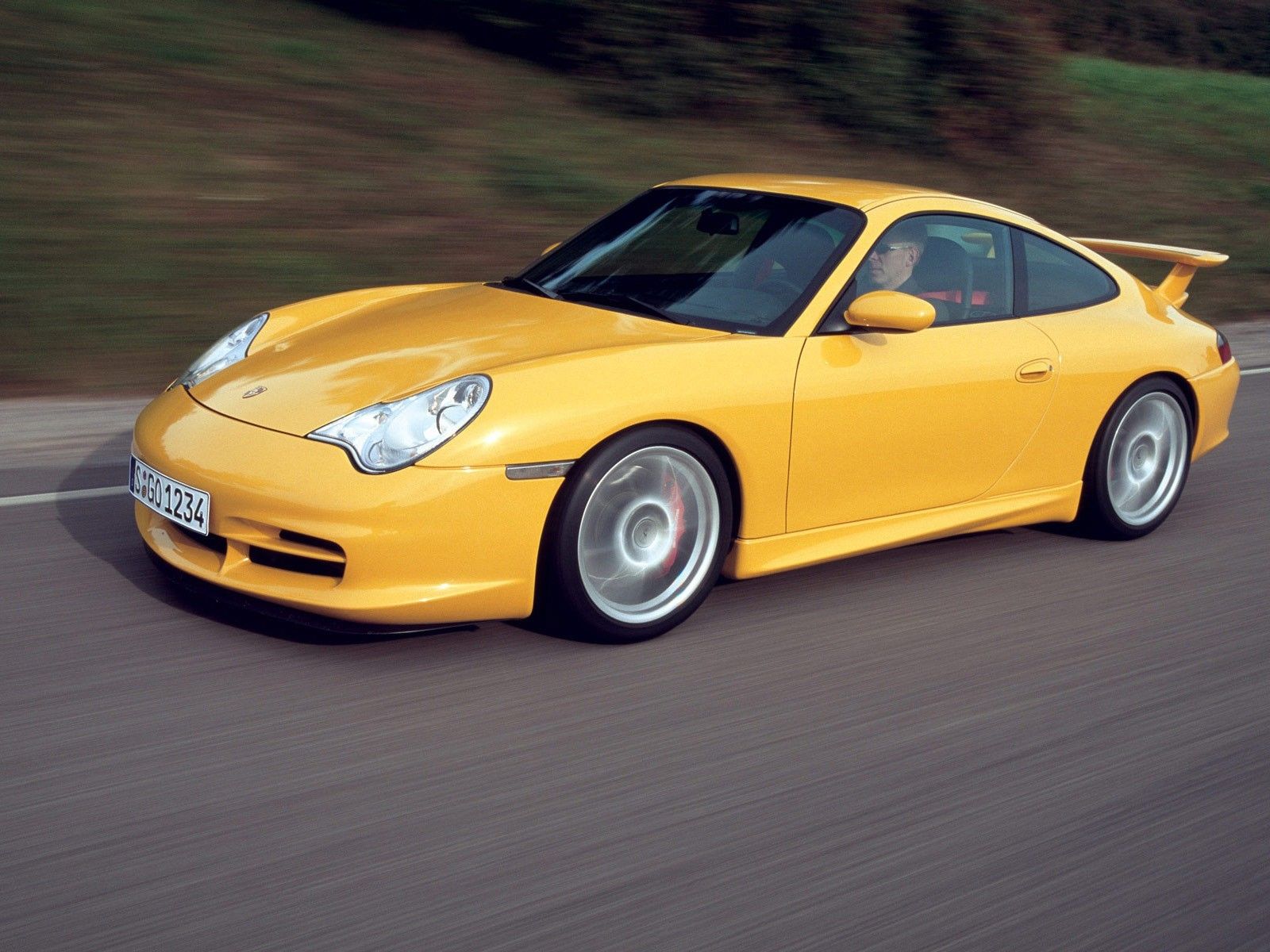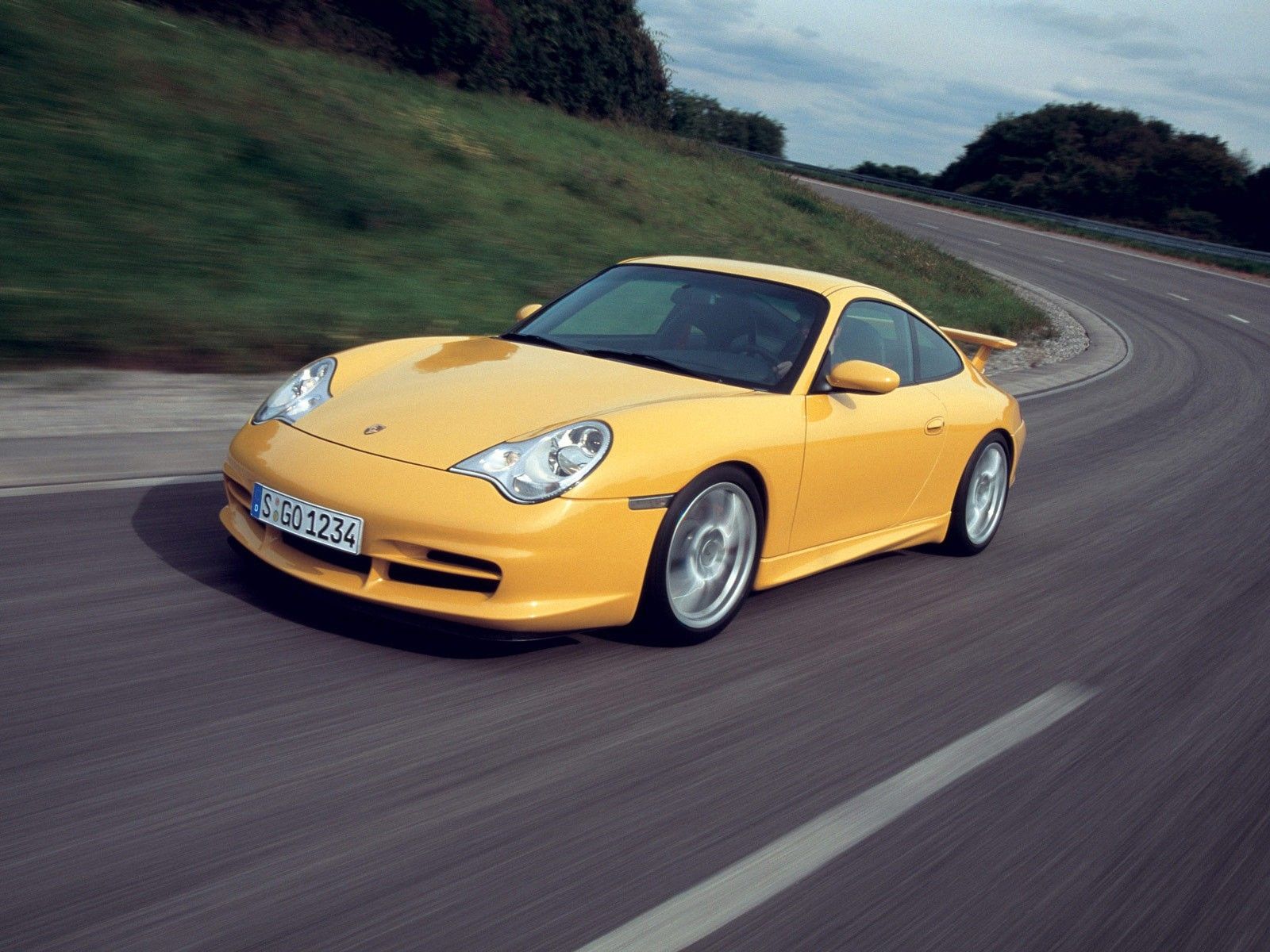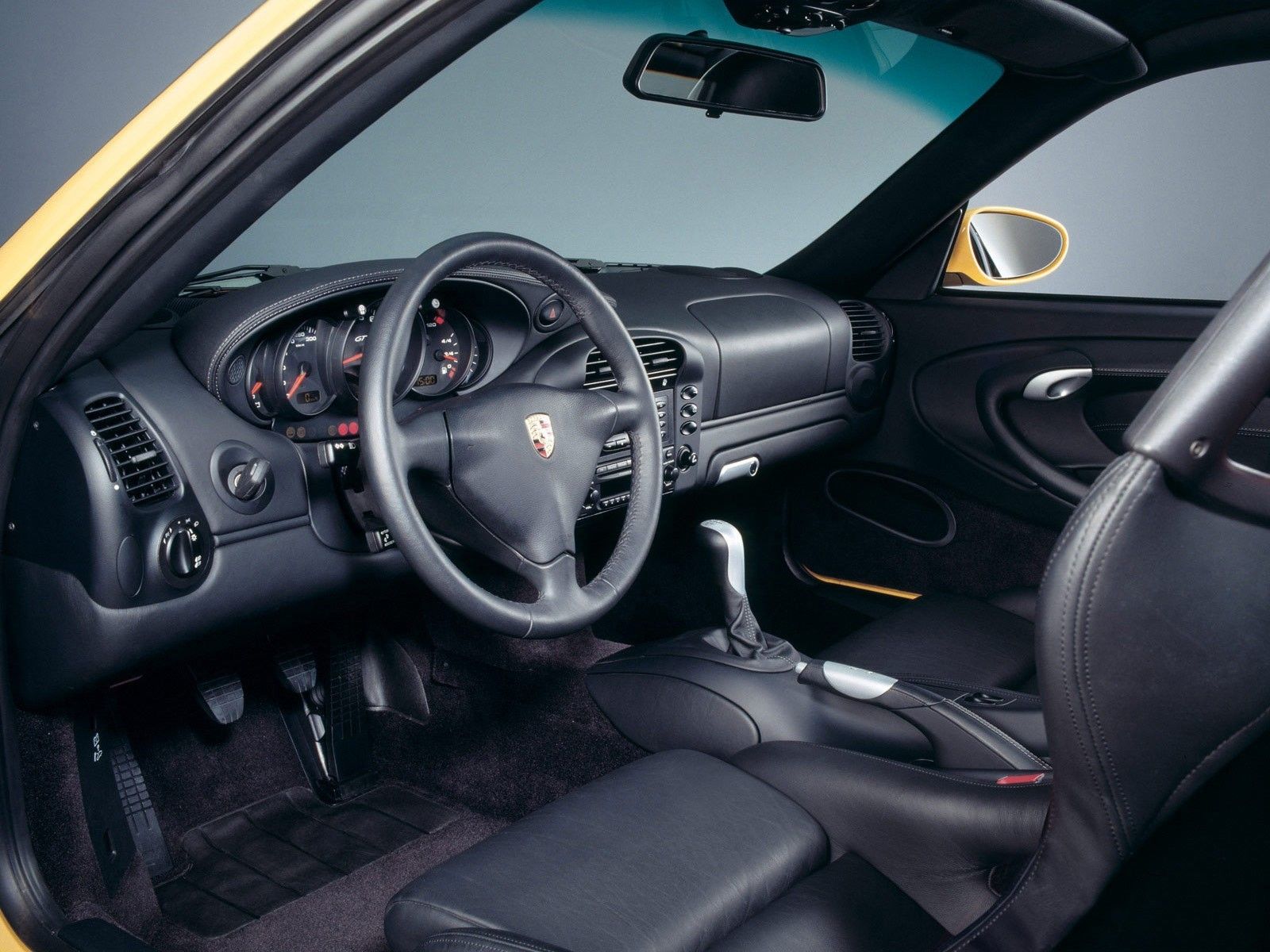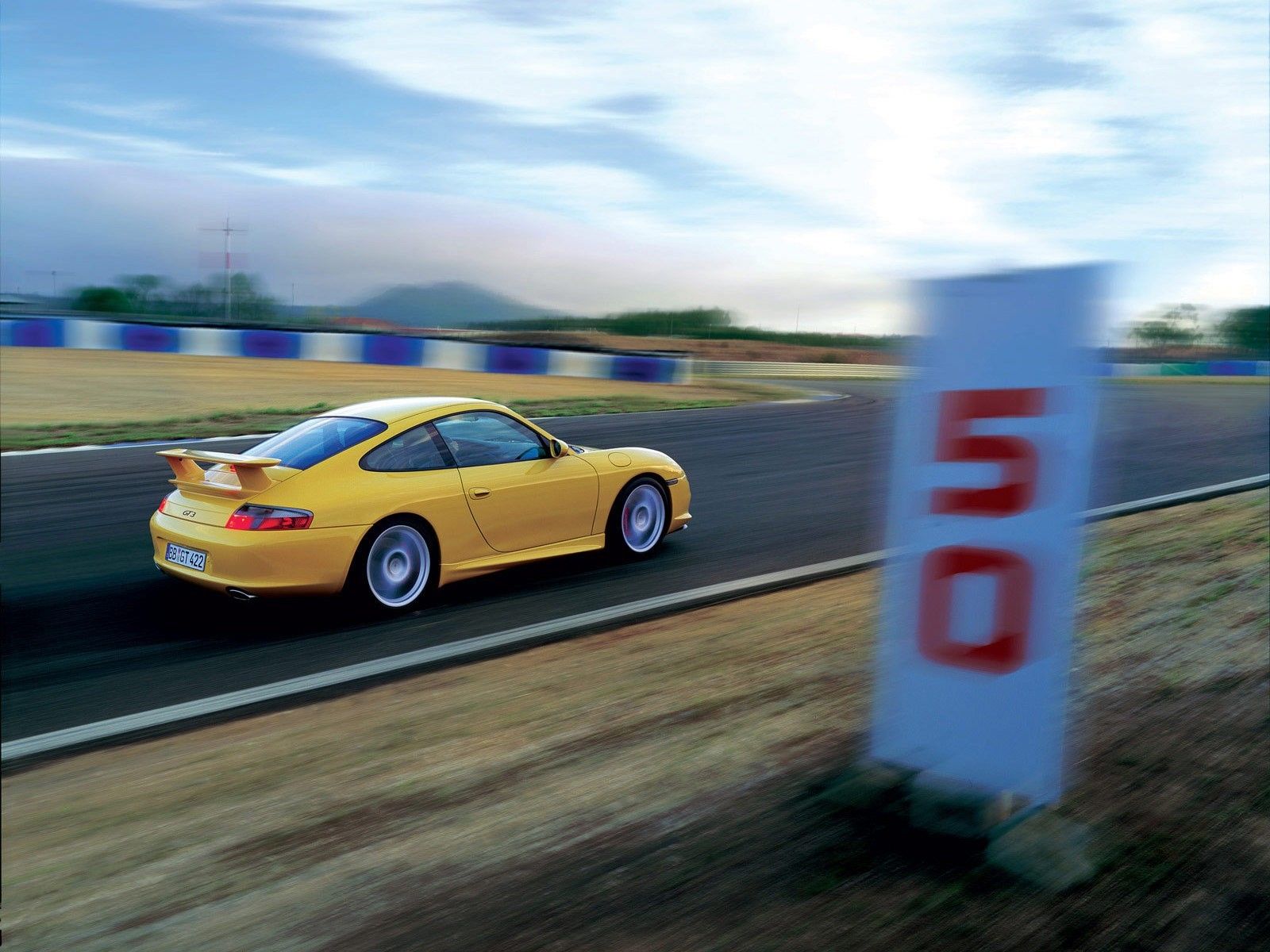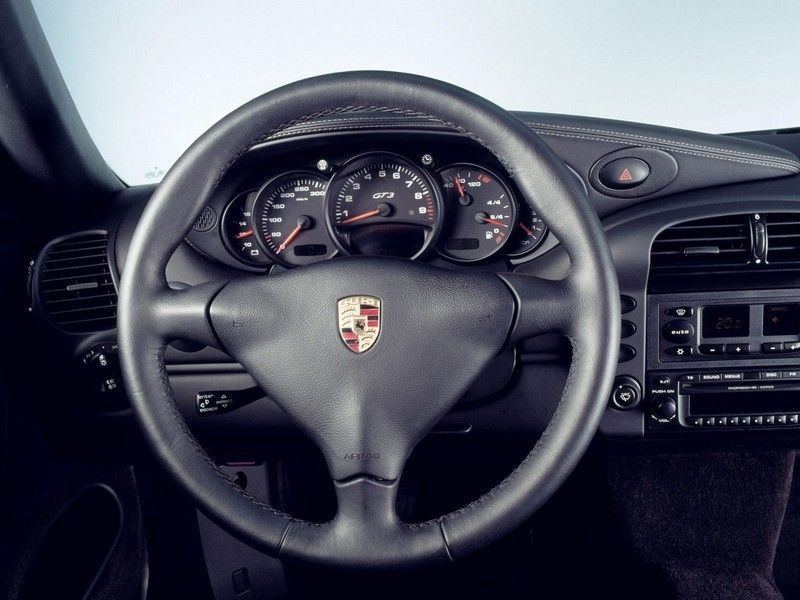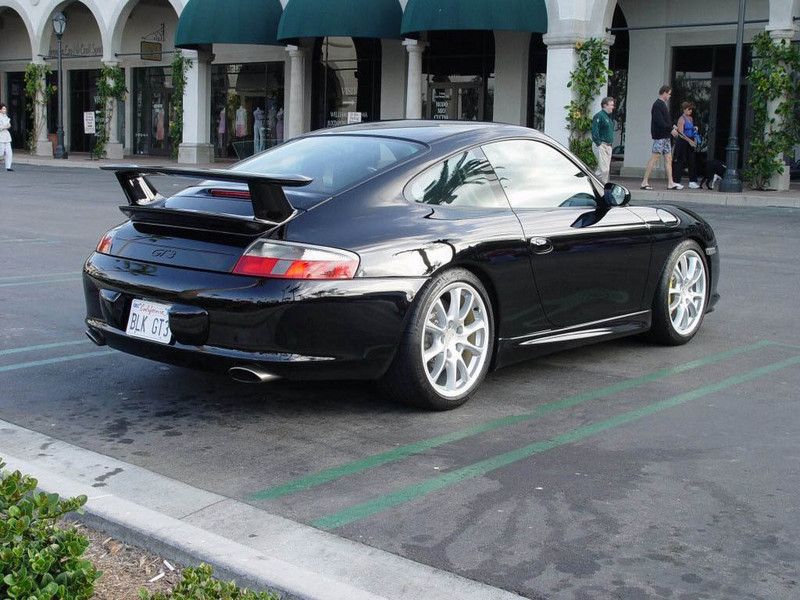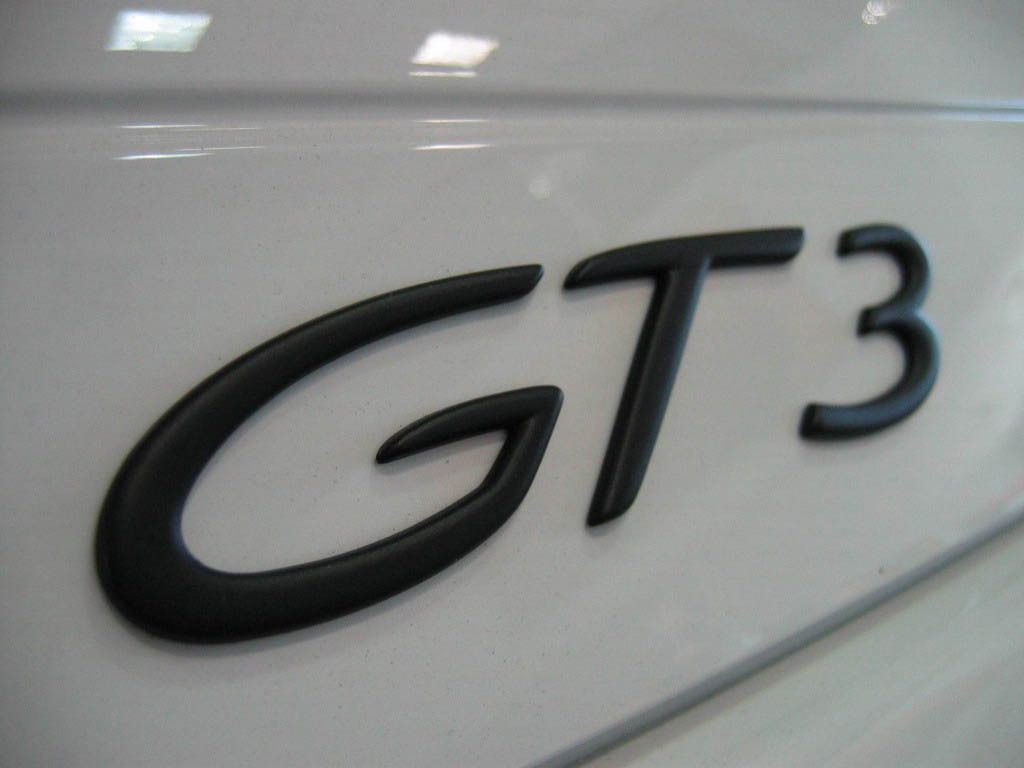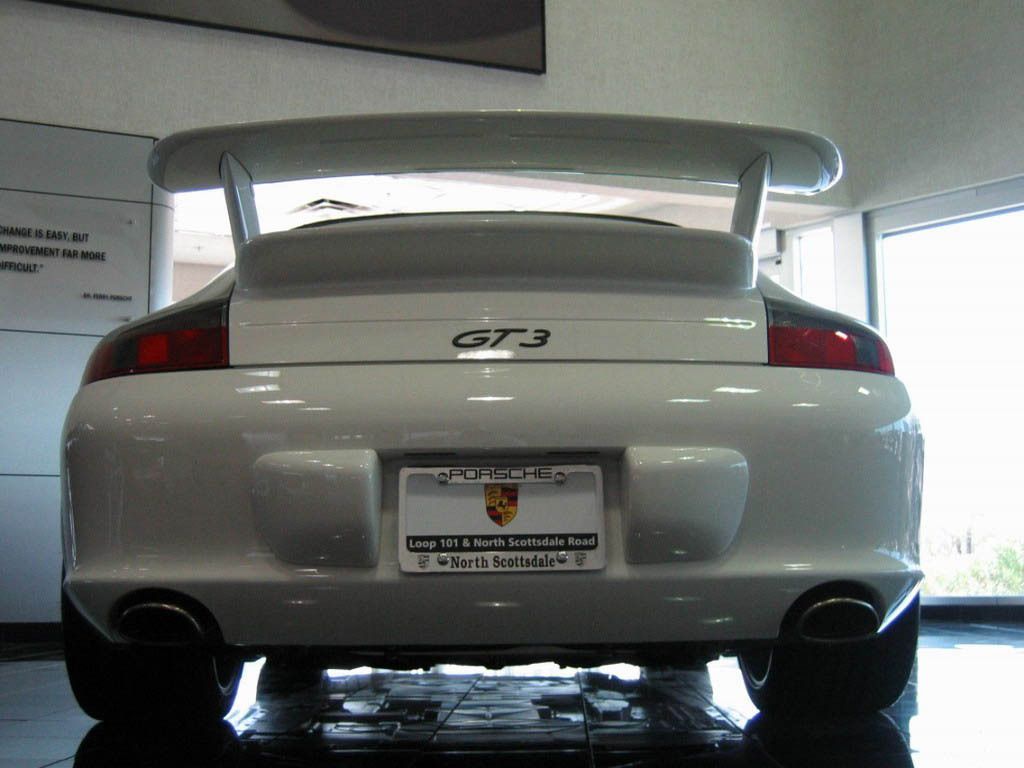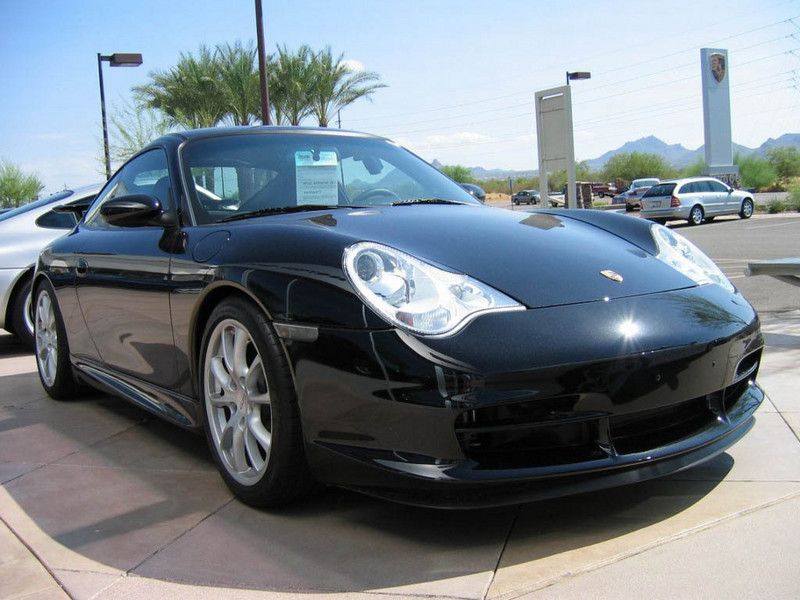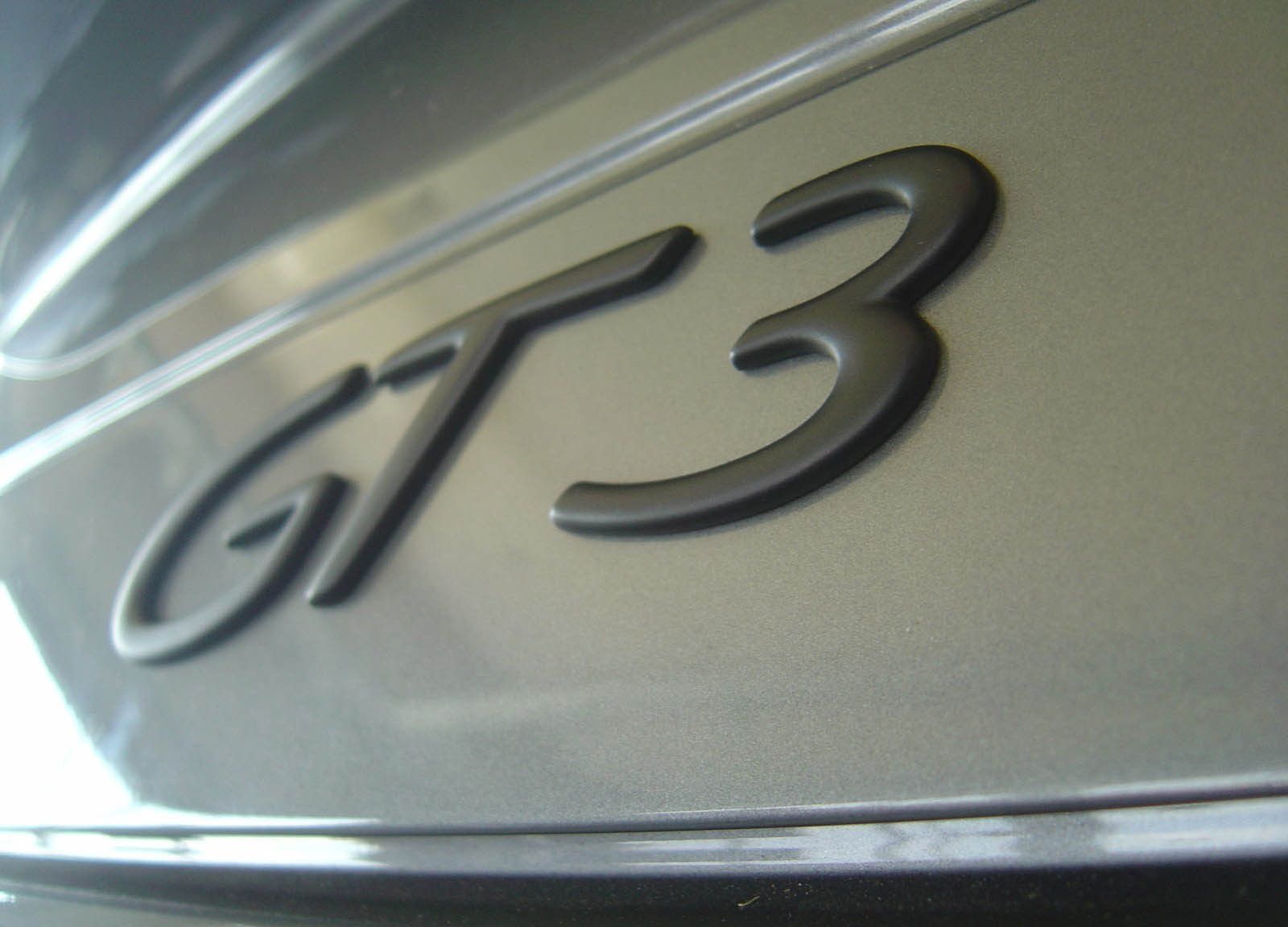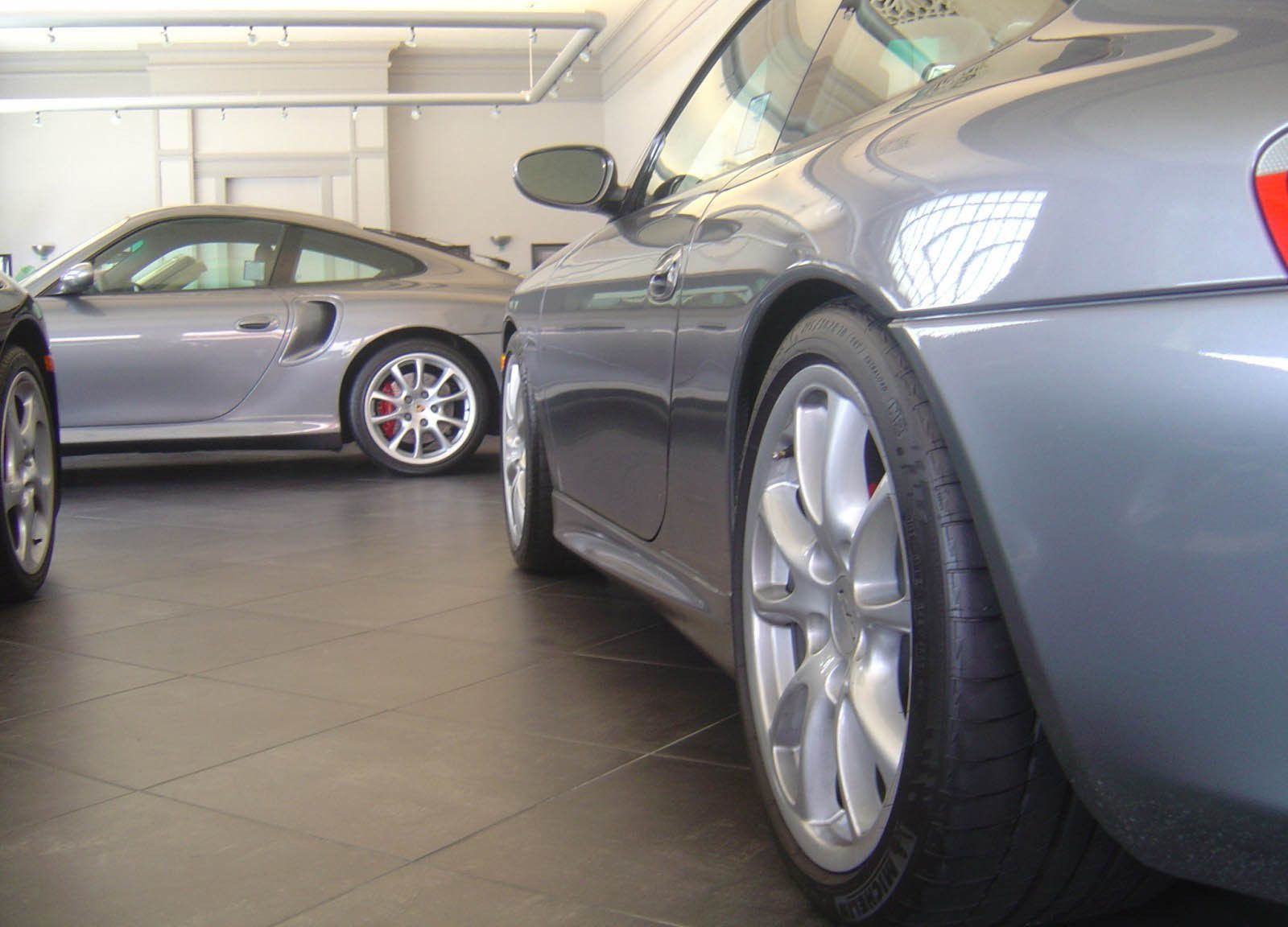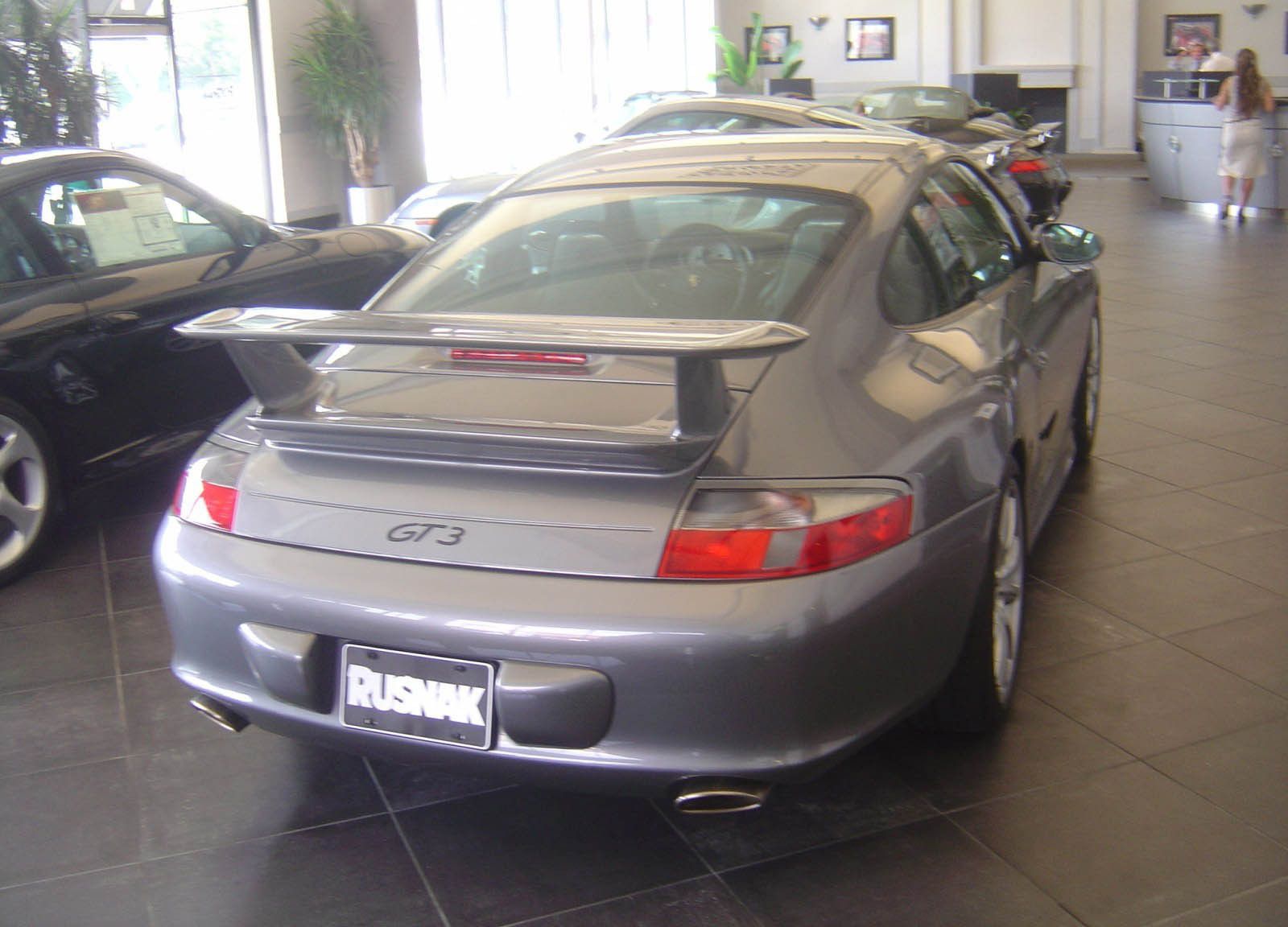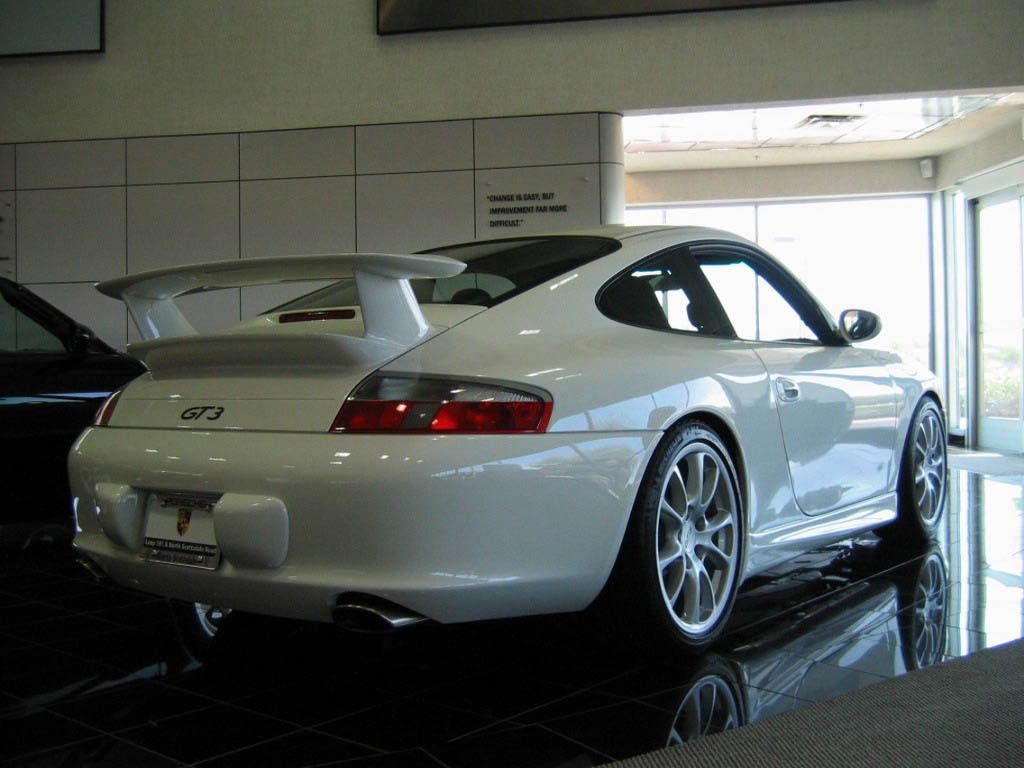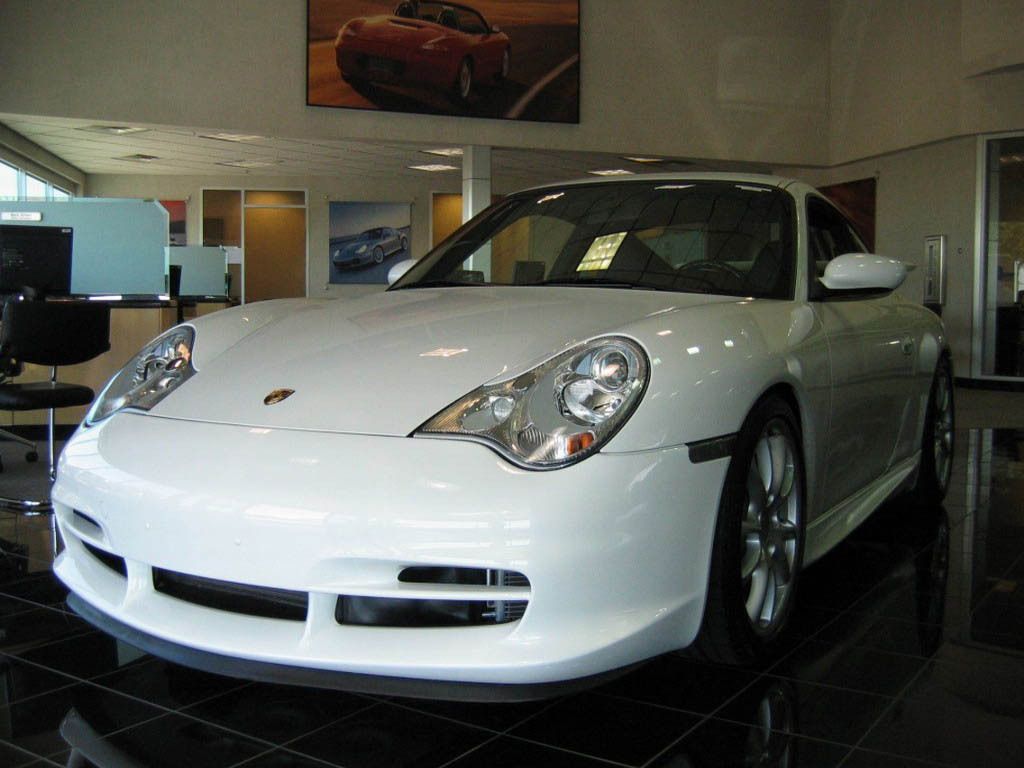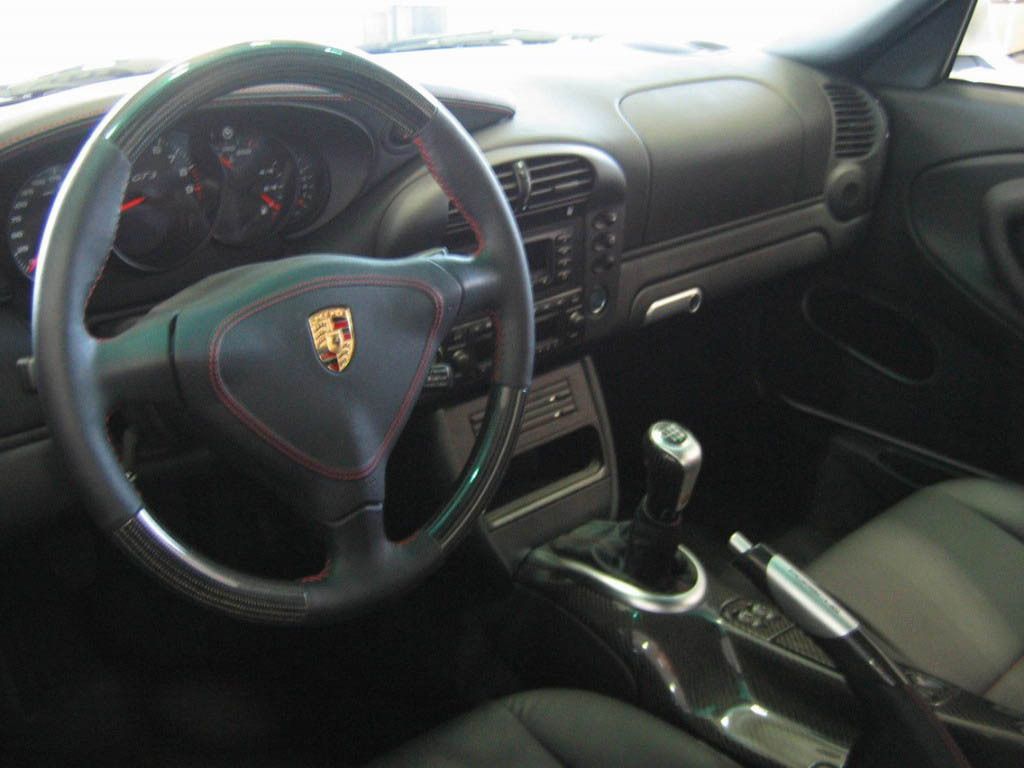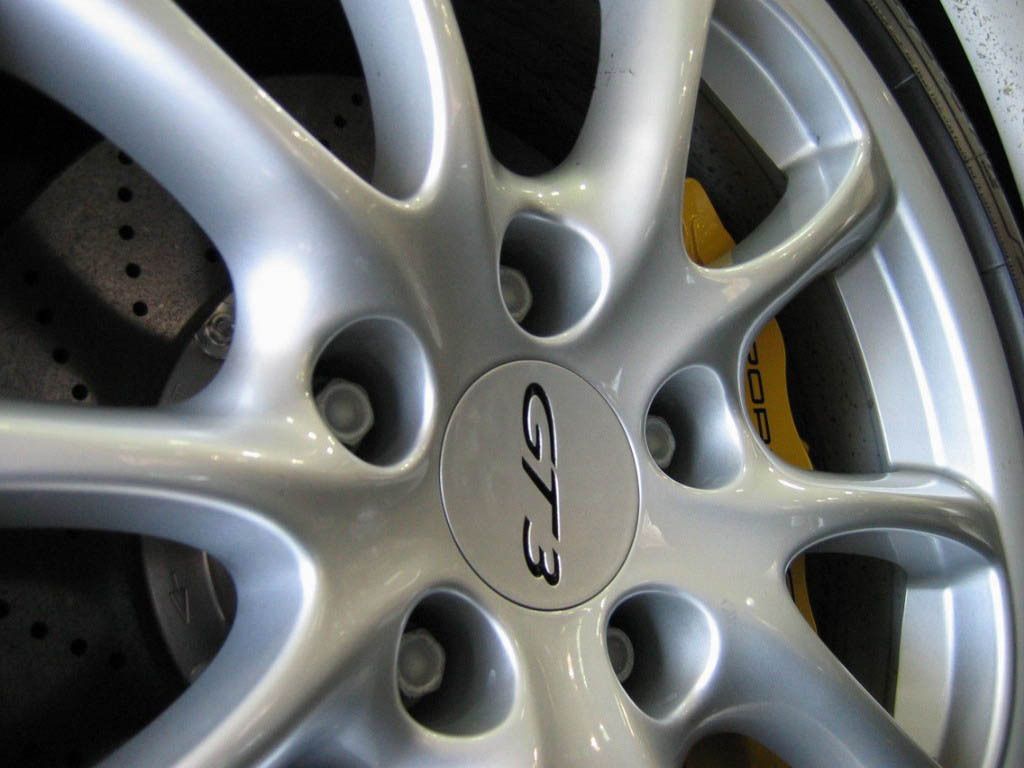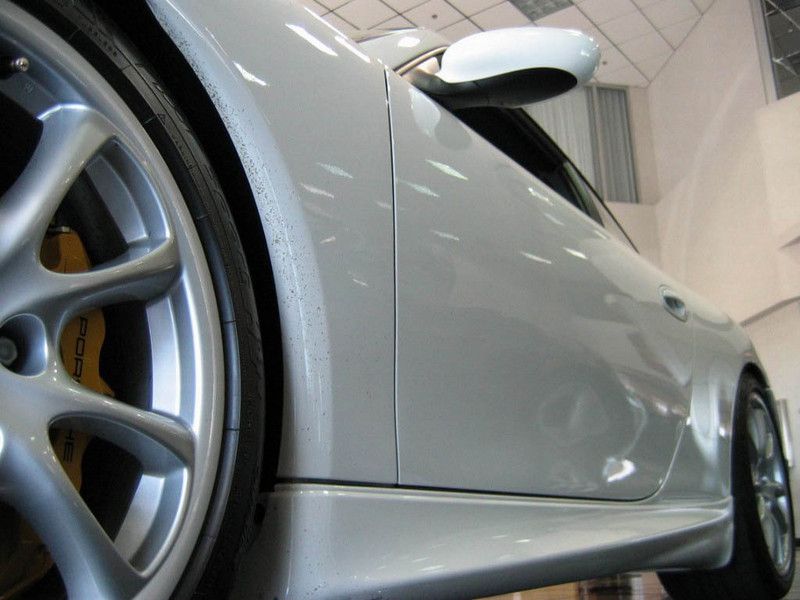After the debut of the 996-generation 911 in 1998, Porsche->ke1 began making plans to enter the car into the GT3 class of the FIA, and set out to develop both the race car->ke148 and the road-going version which was required by GT class homologation rules. The car debuted at the 1999 Geneva Motor Show->ke228 as the first road-legal Porsche to wear a GT3->ke617 badge. As with Porsche's previous 911 RS models, the 996 GT3 was focused on racing->ke447 and became the 996-generation's range-topping model until until a new GT2 was launched for the 2002 model year.
The first in a line of performance cars that would return with each generation (unlike the GT2), the GT3 featured extensive body and interior modifications and a significantly more powerful engine. While the GT2 got its impressive output from a turbocharged unit, the GT3 remained naturally aspirated, although its engine was based on the twin-turbo that motivated the Le Mans->ke1591-winning GT1. A wide array of modifications made it more streetable.
Porsche continued to build the GT3 into 2005, almost a year after the standard 996 was replaced by the 997,->ke509 but it did not bring it to the United States until 2004. A decade since it has been discontinued, the 996 GT3 remains one of the most sought-after water-cooled Porsche 911s.->ke282
Continue reading to learn more about the Porsche 911 996 GT3
porsche-911-gt3-996
- Make: Array
- Model: porsche-911-gt3-996
2000 - 2005 Porsche 911 GT3 (996)
- Make: Array
- Model: 2000 - 2005 Porsche 911 GT3 (996)
- Engine/Motor: flat-6
- Horsepower: 360 @ 7200
- Torque: 273 @ 5000
- Transmission: 6-Speed Manual
Exterior
The first-gen GT3 shared the new design of the 911 996. Penned by Harm Lagaay, it was the first new 911 that was completely redesigned, and carried over little from its predecessor. Major design changes included a more aggressive front end with larger headlamps shared with the Boxster, a sleeker body, and a more raked windshield. Design and aerodynamic features exclusive to the GT3 included slimmer air vents for the front bumper, a front splitter, new side skirts, a revised rear bumper, new wheels, and massive rear wing. These features would become a trademark for the nameplate, being used on modern versions as well.
Pre-Facelift Vs Post-Facelift - side-by-side comparison
In 2004, when Porsche updated the car to 996.2 specs, the GT3 inherited the 996 facelift's new headlamps, but also received a more pronounced front splitter, a slightly reshaped front bumper, and an even bigger rear wing. The new headlamps were introduced following complaints from Porsche fans who were unhappy that the original units were identical to the Boxster's. The restyled cars not only looked fresher, but they finally had their own appearance worthy of a genuine 911.
Exterior Dimensions
|
Length |
4,430 MM (174.4 Inches) |
|
Width |
1,765 MM (69.5 Inches) |
|
Height |
1,270 MM (50.0 Inches) |
|
Wheelbase |
2,350 MM (92.5 Inches) |
Interior
On the inside, Porsche focused on weight reduction and getting the GT3 as close as possible to its race-spec sibling. But even though the cabin was stripped off many of the 911's usual creature comforts, Stuttgart made sure the GT3 would still provide comfort on long distances. The most significant changes included a pair of new bucket seats for the driver and passenger, both wrapped in soft leather. The new seats alone shaved about 44 pounds off the car's curb weight. Additionally, the rear seats were removed entirely, reducing the weight of the car by another 18 pounds. Further changes were noticeable in the center console and center stack areas, with some of the standard car's equipment missing.
Porsche also offered a Clubsport version of the 911 GT3, which had an FIA-approved roll cage bolted in.
Drivetrain
The first-gen GT3 was motivated by a 3.6-liter, flat-six. The naturally aspirated engine was based on the unit used in the 962 and 911 GT1 race cars and used the original air-cooled 911's dry-sump crankcase, with an external oil reservoir.
Initially, the 996 GT3 came with 355 horsepower on tap, which made it the most powerful, naturally aspirated 911 in production at the time. Shifting took place through a motorsport-tuned manual transmission. The 2004 update increased output to 376 horses and 284 pound-feet of torque, 80-percent of which was available from 2,000 rpm. This new figure made it 60 horses more powerful than the base 911 and 100 horses less powerful than the range-topping GT2.
Independent tests revealed the GT3 could accelerate from 0 to 62 mph in 4.5 seconds, hit a top speed of 190 mph and completed the quarter-mile in only 12 seconds at 118 mph.
Although slower than the 911 Turbo on the road, the GT3 quickly became the choice for ultimate drivers because of its remarkably sharp throttle response, better steering, steady balance, and tremendous exhaust note. Its lighter body and underpinnings, and sportier suspension tuning also made it a perfect machine for attacking corners. On the track, the GT3 was unbeatable.
With former rally ace Walter Rohrl behind the wheel, the 996 GT3 completed the Nurburgring Nordschleife in 7 minutes and 42 seconds, which makes it quicker than supercars such as the Pagani Zonda S, Mercedes-Benz SLS AMG, or the Ferrari 599 GTB Fiorano.
Drivetrain Specifications
|
Power unit |
Six-cylinder horizontally-opposed |
|
Bore & Stroke |
100 mm (3.94”) x 76.4 mm (3.01”) |
|
Capacity |
3,600 cc |
|
Compression ratio |
11.7:1 |
|
Engine output |
360 HP @ 7,200 RPM |
|
Max torque |
273 LB-FT @ 5,000 RPM |
|
Output per liter |
73.6 kW (100 bhp) |
|
Engine management |
Motronic ME 7.8, knock control |
|
Max engine speed |
7,800 RPM |
|
Top speed |
302 km/h (187 MPH) |
|
0-100 km/h (62 mph) |
4.8 seconds |
|
0-160 km/h (100 mph) |
10.2 seconds |
|
0-200 km/h (124 mph) |
15.8 seconds |
Suspension and Brakes
The suspension of the 996 GT3 was carrier over from the 911 Carrera, but certain modifications made it suitable for racing. Porsche also reduced the car's center of gravity by about 1.2 inches, and added adjustable anti-roll bars and a spring system compatible with racing springs. An extended range of axle geometry adjustment and reinforcement of chassis components, such as the front pivots and wheel bearings, enabled buyers to use racing tires at the track.
Bringing the GT3 to a halt was the brake system offered with the 911 Turbo. The combo included reinforced four-piston, aluminum calipers in monobloc construction and cross-drilled vented brake discs. At the time of its launch, the GT3, together with the 911 Turbo, offered the best stopping power of all Porsche production sports cars.->ke506
The braking setup was upgraded for the 996.2 GT3, gaining 6-piston calipers on the front, and the Porsche Ceramic Composite Brake system as an option.
Prices
When launched in 1999, the 996 GT3 fetched just under £70,000 (about $110,348), a sticker that increased to £72,000 ($113,500) with the 2004 update. Nowadays, examples in tip-top shape cost anywhere between £80,000 and £90,000 ($126,112 to $141,876).
Competition
Honda NSX-R
Though it wasn't available outside Japan, the NSX-R has always been considered the closest rival to the 911 996 GT3 in terms of engineering philosophy. Also optimized at the Nurburgring->ke999 track for its official release in 2002, the second-generation NSX-R was significantly lighter due to extensive use of carbon-fiber and aerodynamic improvements. Honda also deleted the audio system, sound insulation, air conditioning, and the power steering. At the end of the day, the NSX-R was 220 pounds lighter than the standard model at 2,800 pounds. The GT3 tipped the scales at 3,042 pounds.
The 3.2-liter V-6 engine also received special attention. For the NSX-R, the units were hand assembled by a special team of technicians normally assigned to the brand's racing programs. Although Honda claims the output remained unchanged at 290 horsepower, the media has long speculated that the true output is actually higher. One of the NSX-R's most notable achievements was lapping the Nurburgring track in 7:56, as quick as the Ferrari F360 Challenge Stradale.
Read our full review here.
Ferrari 360 Modena
Although it played in another league, the 360 Modena->ke385 was the GT3's biggest rival commercially. Also sold between 1999 and 2005, the 360 Modena was the more desirable vehicle due to its supercar styling, high-quality interior, and, of course, brand cachet. Built on an aluminum spaceframe chassis, the Modena was slightly lighter than the GT3 and had a more powerful 3.6-liter V-8, rated at 400 horsepower.
However, the Modena was no match to the 996 GT3 in terms of handling. The Ferrari’s->ke252 rear end was easier to break loose in corners, while the Porsche was known to powerslide with greater control, which means superior chassis tuning. Of course, the more aggressive design and more expensive feel of the 360 Modena made the Ferrari the more popular choice among buyers looking for a parade car rather than a racer for the road.
Read our full review here.
Conclusion
Although it followed into the footsteps of previous RS models, the 997 GT3 is basically the car that started the whole GT3 craze. Its incredible performance and its ability to be equally fast and nimble on both the road and the track brought the GT3 nameplate the credentials it continues to enjoy. The fact that the race-spec model scored overall wins at Daytona and Spa and many class wins at Nurburgring only adds to the GT3's rich heritage.


